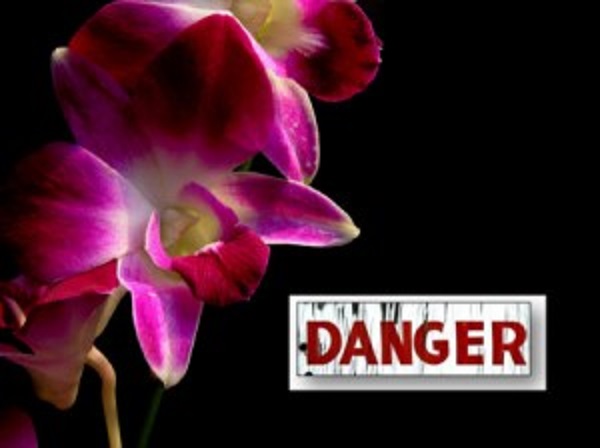
One of the many reasons growers become so fond of orchids is that caring for orchids can be quite a rewarding (and demanding) job. While it’s easy to learn the basics, successfully rearing perfect orchids takes a long time to master. The plants themselves demand patience, sometimes requiring several years of careful tending before they will blossom.
That’s why orchid growers need to always be on the lookout for signs of trouble in their plants. If you know what to look for, you might be able to stop the problem before affects your precious plant. But if not, all your efforts will have been in vain. With that in mind, here are five important warning signs that your orchids are in trouble:
Warning Sign #1 – Spotty Flowers
The flowers are definitely the most delicate part of your plant. That’s why they’ll often be the first to let on when there’s a problem. If you notice dark spots on your flowers, this could be a sign of a fungal or viral infection about to take over your plant. Punctures in the delicate petals of your blossoms mean that you’ve got an insect problem.
Warning Sign #2 – Discolored Leaves
While the leaves of the orchid tend to show signs of trouble less readily than flowers, they’re also much easier to monitor because they’re continuously present during all life cycles of your plant. If your leaves are a darker shade of green, then the plant isn’t receiving enough light. If your leaves are brown or yellowish, then your orchid is getting too much light.
If you find that black tips and brown spots are showing up mainly on the body of your orchid’s leaves, then this might just be sun burn. Move your orchids away from direct sunlight and observe them for a week. If the spots continue to grow, then this might be a of bacterial or fungal infection. One way to treat this is by cutting off the affected part and applying fungicides. White scaly spots on your leaves are particularly worrisome, as this is a sign of a viral infection. Sadly, there is currently no definite cure for viral infections, so it is best to remove the plant from your collection.
Warning Sign #3 – Shoddy Roots
You’ll be repotting your orchid from time to time so it can get the proper aeration it needs to grow. When you do, always be sure to take a few moments to examine your plant’s exposed root system. The roots should look thick and healthy. If they’re discolored or brittle, or moist and malformed, you’ve probably got a case of root rot, which is either caused by overwatering or letting the plant’s mixture turn stagnant.
Warning Sign #4 – Rapid Wilting
As mentioned above, the flowers are the most highly prized part of the orchid. While all aspects of growing an orchid can be enjoyable, it is the colorful blooms that you look forward to the most. If your flowers tend to wilt too soon after they bloom, then you’ve got good reason to be disappointed. Not only have you worked hard for lackluster results, you’ve likely got a problem with your root system as well, and the buds aren’t getting enough nutrients. This is a good time to re-evaluate how you’re caring for your orchids.
Warning Sign #5 – Crawly Things
Pests are a problem for any type of plant and orchids are no exception. Scale insects like to take up residence on the leaves of orchid plants and can be hard to spot, so carefully inspect every time you water. Read this article for more information on how to identify & eliminate scale on houseplants. Mealybugs and aphids are a bit easier to notice because of their nasty habit of chewing holes through leaves and flowers. Read this article for more information on how to identify and eliminate mealybugs. Using an approved insecticide such as malathion is recommended by most growers, and organic alternatives also exist for those who value “green” gardening.
It’s always a shame when something prevents your orchid from blooming into the best it can be. Take steps to get the most out of your plants by following these important tips on caring for orchids. Staying alert can help you prevent disaster for your prized plant.
Mary Ann Berdak is the author of the #1 best seller, Phalaenopsis Orchid Care: The Ultimate Pocket Guide to Moth Orchids, now available at Amazon. For more information on growing healthy orchids, download her free report, “The 5 Biggest Orchid Mistakes (and How to Avoid Them!)”, at OrchidCareZone.com.
Related Articles & Free Email Newsletter Sign Up
How to Prepare Semi-Hydroponics Media for Use with Orchids
Orchid Root Rot Causes & Cures




Comment here